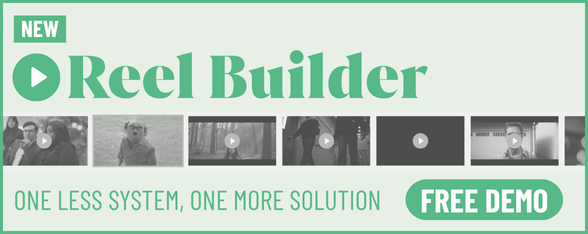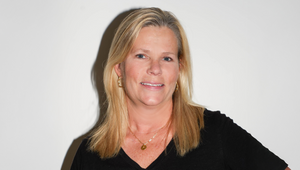
Planning for the Best: Developing a Provocative Brief with Jeremy Daly

As chief strategy officer for Ogilvy Canada, Jeremy Daly is a digital planning leader who loves the intersection of brands, culture and media. Energised by new business, and a fan of building and leading teams, he works across offices to deliver world-class, insights-driven creative solutions for the agency’s local, regional and global clients, which include Mondelez, TD Bank, Unilever, Hellmann’s, Absolut, and Kimberly-Clark, among others.
Outside of this, his career spans several agencies including Droga5, Havas, Mekanism, and Wieden+Kennedy, where he worked on notable campaigns such as Charles Schwab’s ‘Talk to Chuck’, Dos Equis’ ‘Most Interesting Man’, Heineken’s ‘Man of the World’, and Delta ‘Keep Climbing’, as well as work on the Nike Jordan brand.
LBB> What do you think is the difference between a strategist and a planner? Is there one?
Jeremy> There’s more difference in how the roles work at different agencies than in the terms themselves. But, ‘planner’ is a more selective term implying a focus on creative strategy. ‘Strategist’, on the other hand, can imply a closer connection to the business, but can also be very broad – making it more difficult to determine a strategist’s skillset and focus.
LBB> And which description do you think suits the way you work best?
Jeremy> Planner, because the most important value we deliver is inspiring and working with creative teams to create better work. But, there’s a lot we do before working with creative teams; we need to understand and have a point of view on the brand, business, culture and people.
LBB> We’re used to hearing about the best creative advertising campaigns, but what’s your favourite historic campaign from a strategic perspective - one that you feel demonstrates great strategy?
Jeremy> I am most fascinated by successful campaigns for brands that are unloved, or ones that tackle a significant issue. Campaigns for these brands often require a more unexpected answer to be successful. I enjoyed Wieden’s work on Honda with ‘Grrr’, and more recently, Ogilvy’s continuing powerful work on Dove.
LBB> When you’re turning a business brief into something that can inform an inspiring creative campaign, what do you find the most useful resource to draw on?
Jeremy> First, we look for ways to make the brief an emotional, dramatic story. Our most important job is finding the emotional opportunity that will excite and guide a creative team. Before teams or anyone can think, they usually need to feel it first.
Research will also always have its place. Sometimes, a provocative fact or paradoxical research finding can inspire. But most often, it’s something from pop culture that can be shaped into an emotional way of presenting the challenge and the opportunity.
LBB> What part of your job/the strategic process do you enjoy the most?
Jeremy> It’s difficult to pick one. I enjoy thinking of the story for a new brief and finding the cultural pieces that will bring it to life in a simple, surprising way. I am energised by workshopping ideas with other planners and the creative team. It’s amazing and wonderful how a similar starting point can lead to different ideas and perspectives.
LBB> What strategic maxims, frameworks or principles do you find yourself going back to over and over again? Why are they so useful?
Jeremy> Many years ago, I shared an office with a very experienced planner. Before working with him, I’d been at an agency with a ‘more research is always better’ approach. He changed my approach with the simple maxim of defining everything as either interesting, relevant or essential - and removing anything that was not essential. I think of this often for research, breaking down complex strategic tasks, and most importantly, for telling stories and creating briefs.
LBB> What sort of creatives do you like to work with? As a strategist, what do you want them to do with the information you give them?
Jeremy> In my experience, the best creative talents are also the most generous, open-minded and hungry. They always bring a surprising, remarkable answer to a brief. I love working with creatives like this. As a planner, so much of our value is in the relationship with the creative team.
As far as the information I provide, I want them first to feel something. Next, I want them to be intrigued, curious and excited about where they can take the brief.
LBB> There’s a negative stereotype about strategy being used to validate creative ideas, rather than as a resource to inform them and make sure they’re effective. How do you make sure the agency gets this the right way round?
Jeremy> There are a few reasons this can happen. Perhaps the brief was weak and lacked an idea, or it was developed in isolation from the creatives, or the creative team was not strong and went quickly to an idea they already had. The solution to ensuring this doesn’t happen is the reverse of the above – working closely with the creative team and developing a provocative brief with a clear idea.
LBB> What have you found to be the most important consideration in recruiting and nurturing strategic talent?
Jeremy> I think first of attitude, not aptitude. I want people who are curious, creative, nimble, sharp, and have a surprising way of looking at the world around them. At whatever level, it’s important to have a fluid mind, always looking and trying to understand.
To nurture talent, it’s important to know them - what they want, where they want to go, and where they can grow that will most excite them. I try to find the right balance with each person between having enough ownership to feel excited, but not so much that they feel unsupported. Modelling behaviour and values is an important way to nurture talent. We all respond to the people around us – consciously or not. It’s important for senior leaders to be personally working in the way that we want others to follow. Part of my role is ensuring senior planning leaders are working in a way that is inspiring to others.
LBB> In recent years, it seems like effectiveness awards have grown in prestige and agencies have paid more attention to them. How do you think this has impacted on how strategists work and the way they are perceived?
Jeremy> I am a fan of the Effie’s, both as an entrant and a judge. I enjoy the process, the approach, and seeing the other ideas. All advertising agencies are fundamentally tasked with creating a measurable change, but it's easier to dress up average strategy and creative with a result that obscures the true quality of the strategic and creative idea. Paradoxically, focusing immediately on effectiveness too often leads to predictable best practices and not to breakthrough success.
LBB> Do you have any frustrations with planning/strategy as a discipline?
Jeremy> There are many different approaches to the discipline. But, I’m frustrated when planning or strategy adds complexity without clarity. Too often, planners and strategists confuse having a great level of detail with having an idea.
LBB> What advice would you give to anyone considering a career as a strategist/planner?
Jeremy> Meet the people, look at the work, and go to events. How much does it excite you?
It’s a wonderful career with the opportunity to learn and meet many different types of people. But, it is different. Ask yourself why you want to do this, and what excites you most about it!















